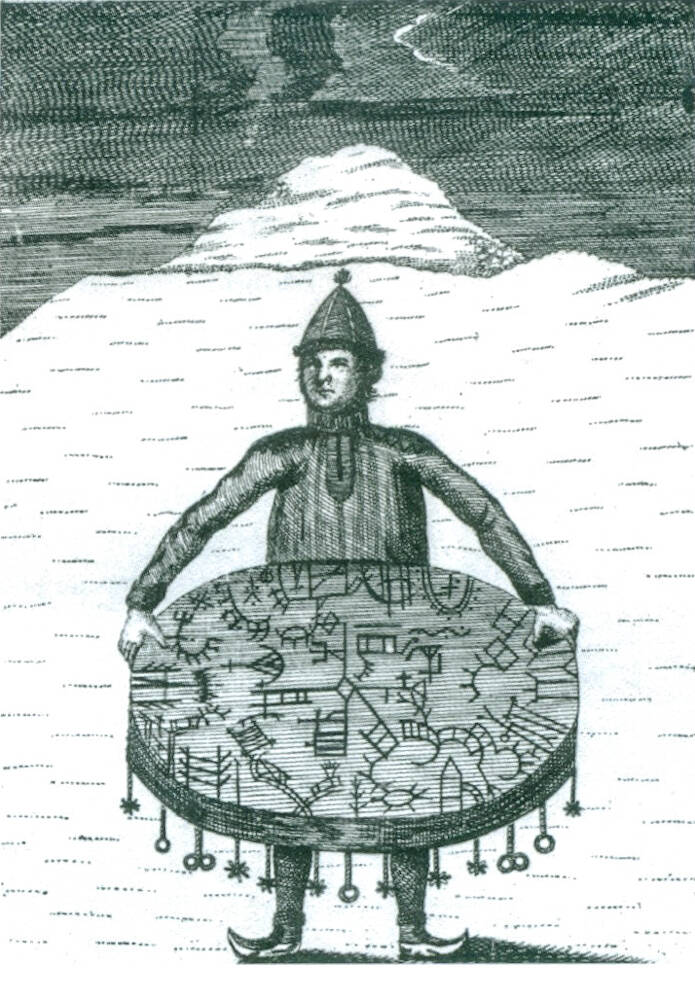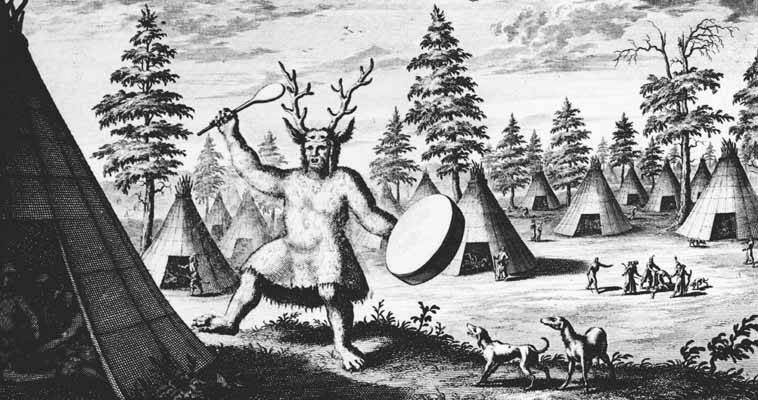Shamanism is a culturally informed magico-religious practice grounded in animistic cosmologies and beliefs. These practices were traditionally found in predominantly hunter gatherer and pastoralist societies, though are not limited to them.
Shamanism involves various techniques to alter a shaman's state of consciousness in order to contact or communicate with various spirits and/or to gain an action from them. In essence it is a process that allows the shaman to transcend the human condition, becoming 'of the spirits', even if only for a limited time.
Academically speaking the word 'shaman' comes from the word 'samān' of the Tungusic speaking peoples meaning 'he who knows'. These days the words 'Shaman' and 'Shamanism' are academically used to refer to the same or similar practices all around the world to those of the Tungusic 'samān' and has taken on a meaning of its own that is still much debated by academics. The academic study/interest of shamanism is around 300 - 400 years old. One of the earliest known depictions of a shaman (excluding rock art) is from the 17th Century recorded by Nicolaes Witsen. Ethnographic researchers were active throughout the 19th and 20th century leading to multiple publications in both books and academic journals on shamanism from all corners of the globe. Eliade's book on shamanism published in the 1950s brought a great deal of this disjointed knowledge together offering the first global synthesis on the subject. Archaeological evidence can place shamanism back to around 8000 - 12000 years ago based on the Bad Dürrenberg burial in Germany and the Shaman burial in the southern Levant (Israel). Linguistic comparative analysis conducted by Witzel theoretically places shamanic practices and beliefs as far back as 60,000-70,000 years or so. As such shamanism is one of the longest studied types of (magico-religious) practice in academia (pre dating or coinciding with the age of enlightenment) and is one of the oldest, if not the oldest, magico-religious practice in human history that we are aware of.

18th Century Copper carving depicting a Sámi shaman from Meråker, Nord-Trøndelag with his drum (meavrresgárri / gievrie).
Leem, Knud (1767). Beskrivelse over Finnmarkens Lapper, deres Tungemaal, Levemaade og forrige Afgudsdyrkelse (Copenhagen: 1767).
Shamanism was first popularized among the general public back in the 1960s by Carlos Castaneda and then in the 1990s by Dr Michael Harner. Michael Harner's 'Core Shamanism' laid much of the foundations of Neo-shamanism within the new age community which has since changed and developed. The shamanism under Neo-Shamanism has taken on a myriad of forms including being seen as a religion and/or incorporating certain aspects of western political movements or beliefs. Traditional indigenous practitioners of shamanism tend to view it as a practice, not as a religion (this was certainly the case in my experience in Mongolia). As such this practice can work in unison with other beliefs and religions (In much the same way as Yellow shamanism developed in Mongolia in response to Buddhism). Traditional indigenous forms of shamanism do not incorporate much of the views, aims, or beliefs shared by contemporary western society, though do often stress the importance of looking after the natural environment.

The famous 17th century depiction of a Siberian shaman by Nicolaes Witsen. ‘Een Schaman ofte Duyrel-Priester in’t Tungeesen lant’- ‘A Shaman or Animal Priest in the Tungus land’
Selection to become a shaman in traditional indigenous cultures varies from culture to culture. However among most a prospective shaman requires the following criteria:
1. Chosen by the spirits and/or Gods. This can manifest in various signs including:
- An incurable strange sickness dubbed 'shamanic sickness'.
- Strange dreams
- Supernatural Experiences
There are many records of prospective shamans resisting the 'calling' experienced under 'Chosen by the Spirits and/or Gods'. Some even contemplated suicide whilst others were threatened with death by their spirits if they didn't accept. Becoming a shaman was a life commitment and an individuals life was determined for them by their spirits, there was little personal choice or autonomy in this matter.
2. A family lineage (hereditary transmission of an inherited gift passed on from one generation to another).
3. In some indigenous cultures self elected shamans are accepted and they have to do slightly different activities as part of their training to their chosen counterparts.
Though flexible by nature traditional indigenous forms of shamanism are not the same as Neo-shamanism. Neo-shamanism incorporates many values and beliefs inherent in contemporary western society and rejects some of the more traditional practices (or aspects thereof) on these bases.
In all, shamanism is a complex and multifaceted phenomenon with a rich history and global reach.
If you want to understand more about the definitions, critiques, and terminology behind shamanism I have attached a link to the academic paper 'Towards a Definitive Universal Definition: A Dialectical Synthesis for the Definition of the Terms ‘Shaman’ and ‘Shamanism’' (Malim 2024).


Add comment
Comments